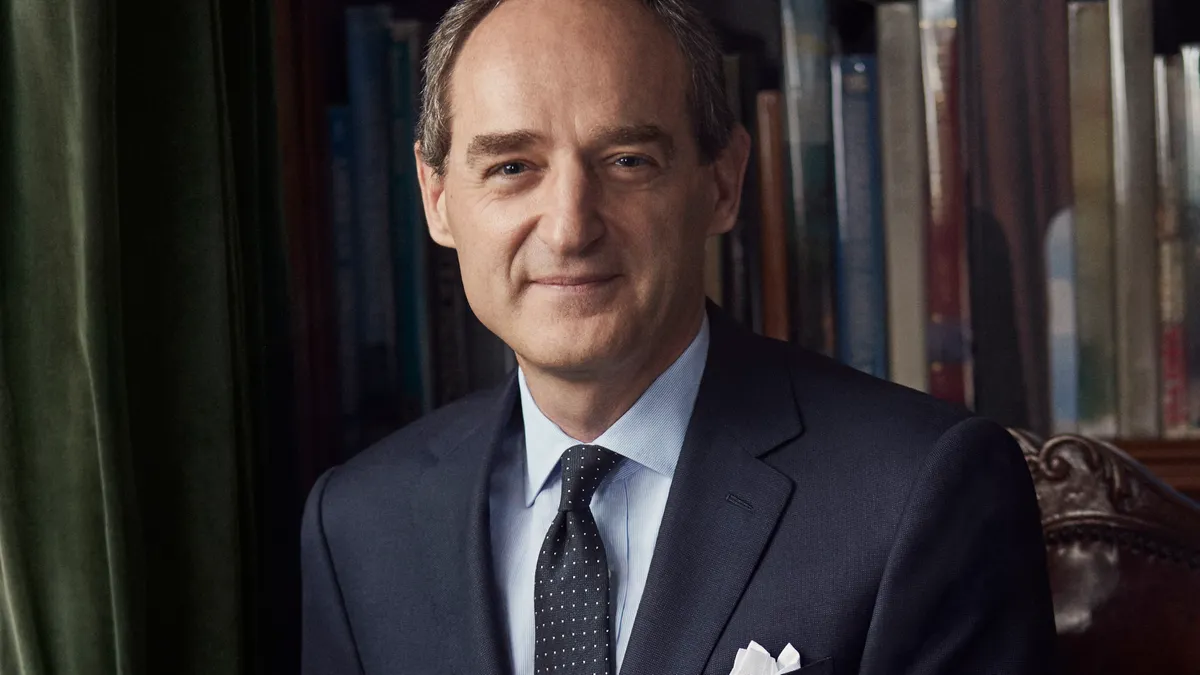Dive Brief:
- Ralph Lauren has appointed longtime Procter & Gamble executive Patrice Louvet as the fashion and apparel brand’s new CEO. Louvet will replace outgoing CEO Stefan Larsson, who joined the company amid much fanfare in late 2015 after Ralph Lauren stepped down from the role. The appointment, which includes a position on the company’s board, is expected to become effective July 17, according to a company press release.
- Louvet previously served as group president for P&G’s Global Beauty division, which includes 12 brands — among them Pantene, Olay and Old Spice — representing almost $12 billion in revenue in 2016. In all, Louvet worked with P&G for more than 25 years in a range of leading positions that included group leader for men’s grooming brand Gillette.
- Larsson left Ralph Lauren on May 1 following disagreements with the namesake founder and executive chairman over the direction of the company. When reached by Retail Dive, a Ralph Lauren spokesperson could not comment on Larsson’s plans post-Ralph Lauren.
Dive Insight:
When he comes aboard, Patrice Louvet will join a company in transition. Ralph Lauren is currently in the middle of executing on a strategic plan that includes the closing of its Fifth Avenue store in New York City as well as others in the company's portfolio. The moves follow a steep decline in profits and market value amid struggles with an inefficient cost structure, a lack of agility and increased competition from fast fashion and e-commerce.
Ralph Lauren said in Wednesday’s release that he has been focused on finding a new leader for months. Louvet's experience running global brands as well as his “collaborative working style, transformation experience and intense focus on results” puts Ralph Lauren in a stronger position going forward, according to Lauren.
Larsson, who joined the brand as CEO in late 2015, and Lauren disagreed on key aspects of the company’s future. Ralph Lauren has been attempting to boost its profitability through its “Way Forward” plan, which includes a retreat from department stores in favor of digital sales, flagship store sales as well as moves to emphasize best-selling styles and provide more “see now, buy now” opportunities for customers.
The turnaround effort became crucial as sales and profits — hobbled by underperforming stores — fell 50% over two years by 2016, a year when its market value was almost half of the $16 billion value it held three years prior. Ralph Lauren’s current cost-cutting plans are expected to save $140 million a year.
Before joining the company, Larsson had led Gap Inc.’s Old Navy brand, where he was credited with improving the unit’s approach to style and speeding up its supply chain. Some observers noted that Larsson may not be the best fit for Ralph Lauren before he joined, given his lack of experience at a brand as dependent on wholesale as Ralph Lauren. He was also on the record as relishing Old Navy for its low-key, low-price styles — making the choice seem odd for a retailer whose logo is an embroidered polo player.
At the time of his announced departure, Larsson said that “we announced a plan to refocus the company on what made it iconic, evolve that for today and build our brand to its full potential.” He added: “That plan is on track — I am proud of the progress the whole team has made and I am committed to ensuring its uninterrupted execution. Ralph will always be an inspiration to me, and I am grateful to have had this experience.”












